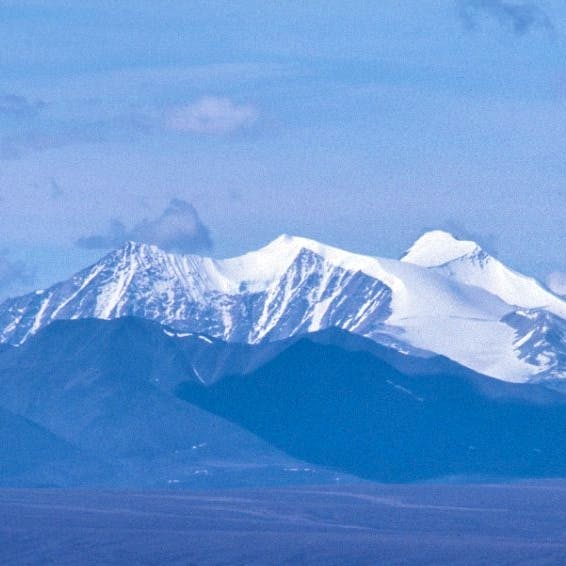BOSTON (August 8, 2013) – The National Marine Fisheries Service has agreed to formally review the impact of commercial fishing operations on endangered whales and to issue new rules to protect the species from entanglement in fishing gear, as a result of a settlement in litigation filed by The Humane Society of the United States, Defenders of Wildlife and Whale and Dolphin Conservation.
Each year, critically endangered North Atlantic right whales and endangered humpback whales, fin whales and sei whales suffer death or serious injury from entanglement in fishing gear. The agency’s promised review, referred to as a “Biological Opinion” under the Endangered Species Act, will evaluate the impacts of the American lobster fishery on the survival and recovery of the species and determine whether additional risk-reduction measures will be required.
Sharon Young, marine issues field director for The HSUS said: “Death and serious injuries from entanglement in fishing gear is considered one of the greatest threats to the recovery of endangered Atlantic whales. This agreement is an important step forward in the ongoing battle to save these species that are teetering at the very brink of extinction.”
The groups filed a complaint earlier this year in the federal District Court of Massachusetts, alleging that the agency’s management of the American lobster fishery violated the Endangered Species Act and Marine Mammal Protection Act by allowing unlawful entanglements of endangered whales, and because the agency had failed to properly consider the threats the fishery poses to the species.
Jane Davenport, senior staff attorney for Defenders of Wildlife said: “There are less than 450 North Atlantic right whales left in the wild, and each year more whales die from entanglement. Once these threats are properly evaluated, steps can be taken to resolve them so that the North Atlantic right whale has a chance to recover.”
In addition to requiring a new ‘Biological Opinion,’ the agreement also requires the agency to issue final rules to prevent future entanglements in vertical lines – lines running from buoys at the top of water all the way down to lobster pots and other gear at the ocean floor – by next year. The agency first admitted these new rules were needed in 2003, and many whales have been killed or seriously injured by commercial fishing gear during the last decade that the new rules have been languishing.
Regina Asmutis-Silvia, executive director for Whale and Dolphin Conservation, North America said: “We are pleased that the agency has finally agreed to issue new protective measures for endangered whales in the Atlantic. Rather than wasting time and resources in litigation, the parties can now work together to prevent the extinction of these magnificent and highly endangered whales.”
Facts:
• The right whale, humpback whale, fin whale, and sei whale are all endangered whales whose habitat spans the Eastern Seaboard of the United States from Florida north to Canada.
• Any line rising into the water column has the potential to entangle a whale. Whales can become entangled when they encounter and swim into a line, or move along that line until they come up against something like a buoy that can be caught in their mouth, fin, around the tail stock or some other body part.
• Entanglement can result in immediate death from drowning, or the animals can die over an extended time period as they become incapacitated by injuries or infections caused by the entanglement. Prolonged entanglement can also make the animals less able to fight infection or disease, and may make them more prone to ship strikes.
• The North Atlantic right whale is critically endangered. The population was decimated by commercial whaling in the last century, and despite being protected since 1970, has not recovered. Scientists estimate that if current trends continue, the species could go extinct in less than 200 years.
• Entanglement in fishing gear and collisions with ships are the two primary threats to right whales.
Media contacts:
The HSUS: Kaitlin Sanderson, (301)721-6463; ksanderson@humanesociety.org
Defenders of Wildlife: Jane Davenport, (202) 772-3274; jdavenport@defenders.org
Whale and Dolphin Conservation: Regina Asmutis-Silvia, (508) 746-2522;
regina.asmutis-silvia@whales.org
Defenders of Wildlife is dedicated to the protection of all native animals and plants in their natural communities. With more than 1 million members and activists, Defenders of Wildlife is a leading advocate for innovative solutions to safeguard our wildlife heritage for generations to come. For more information, visit www.defenders.org.
The Humane Society of the United States is the nation’s largest animal protection organization, rated the most effective by its peers. Since 1954, The HSUS has been fighting for the protection of all animals through advocacy, education and hands-on programs. We rescue and care for tens of thousands of animals each year, but our primary mission is to prevent cruelty before it occurs. We're there for all animals, across America and around the world. Celebrating animals and confronting cruelty -- on the Web at www.humanesociety.org.
Whale and Dolphin Conservation (North America) Inc. (WDC) is the global voice for the protection of whales and dolphins and their environment. It is based in Plymouth, MA and is part of the Whale and Dolphin Conservation, a charity registered in England with additional offices in Germany, Argentina and Australia. For further information please visit www.whales.org.
For over 75 years, Defenders of Wildlife has remained dedicated to protecting all native animals and plants in their natural communities. With a nationwide network of nearly 2.1 million members and activists, Defenders of Wildlife is a leading advocate for innovative solutions to safeguard our wildlife for generations to come. To learn more, please visit https://defenders.org/newsroom or follow us on X @Defenders.
News

Defenders Slams Trump Interior Pick Burgum

